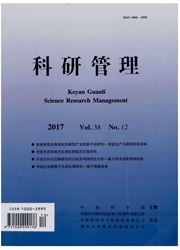

 中文摘要:
中文摘要:
对于创新网络的研究多从网络整体或企业个体网络的角度出发,较少关注企业结派行为所形成的网络子群结构对企业创新能力的影响。本文基于中国11个高科技行业的联盟数据,使用派系过滤算法和负二项回归模型研究了创新网络中企业结派行为对高科技企业创新能力的影响。研究发现:对于不同规模的网络子群,子群内部联系密度和子群间的联系数量对企业创新能力影响不同,规模小或者结构较简单的子群内企业比子群外的企业创新能力更高,并且具有跨子群联系的企业创新能力较高;规模较大的子群间的联系反而不能提高企业创新能力;同时,网络中的子群数量越多,即企业结派行为越频繁,对网络中企业创新能力的促进作用越大。本研究考虑到了企业子群结构以及子群间的重叠特性,有助于揭示创新网络中企业结派行为的特点,增强对创新网络结构的了解,并为评价和提高我国高科技产业的企业创新能力提供借鉴。
 英文摘要:
英文摘要:
Studies on innovation network mainly focus on the whole network or the firms' individual network, there are few studies on the influence of network subgroups formed by the cohesive behaviors on enterprise innovation capability. The inter - firm inno- vation networks of 11 high - tech industries in China are built based on alliances data and clique percolation algorithm and nega- tive binomial regression model are applied to study the impact of the enterprise' s cohesive behaviors on the innovation capacity of high - tech enterprises. It is found that for firms in small or simple subgroups, internal link density of subgroups and the number of the links between subgroups affect the enterprise' s innovative capability positively. But for firms in big or complex subgroups, these characteristics of subgroups have no promoting effect to finns. Meanwhile, the number of subgroups, indicating the frequen- cy of firms' cohesive behaviors, affects the enterprise' s innovative capability positively. By taking the subgroup structures at middle level of innovation network into consideration, the results are helpful to uncover the characters of cohesive behaviors in in- novation network, enhance the comprehension of innovation network structures and provide references for evaluating and impro- ving enterprise innovative capability of high - tech industries in China.
 同期刊论文项目
同期刊论文项目
 同项目期刊论文
同项目期刊论文
 期刊信息
期刊信息
